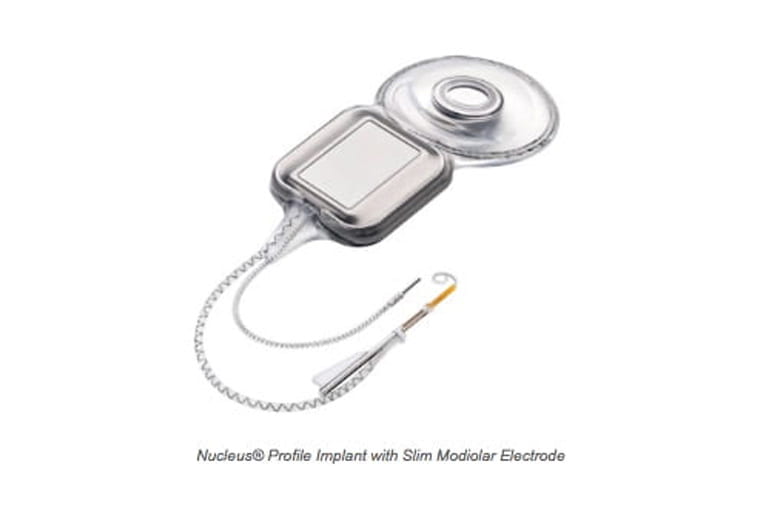The cochlea is arranged like a rolled-up piano keyboard, as shown in box A in the figure below. Lining the cochlea are many thousands of hair cells that convert the sound into electrical signals. Cochlear implants only have up to a couple of dozen electrodes, each of which performs a similar function to a hair cell or group of hair cells.
Boxes B, C, and D illustrate the cochlea in an unrolled configuration. The base of the cochlea, which is where the sound enters, responds to the highest pitches. This is illustrated in box B. The apex, or innermost part of the cochlea, responds to the low-frequency tones, shown in box D. The locations in between the base and the apex correspond to the range of frequencies in between the two extremes.

The cochlear implants market will also be driven by a long/established clinical history, strong benefits vs. Risks, technological innovations, aggressive sales/marketing and education efforts,. The report on Cochlear Implants Market offers in-depth analysis on market trends, drivers, restraints, opportunities etc. Along with qualitative information, this report include the quantitative analysis of various segments in terms of market share, growth, opportunity analysis, market value, etc. For the forecast years. Cochlear Implant (CI) System Market Size 2020 Top Leading Companies, Consumption, Drivers, Trends, Forces Analysis, Revenue, Challenges and Global Forecast 2026 Published: Nov. 21, 2020 at 4:57 a. The report on the cochlear implants market provides a holistic update, market size and forecast, trends, growth drivers, and challenges, as well as vendor analysis. That's why Cochlear offers a range of products and accessories designed to help you get the most out of life. As part of our promise to help you 'Hear Now. And always', we are committed to providing you with innovative hearing solutions and unsurpassed support throughout your entire hearing journey — today and into the future.
Cochlear implants divide the sound into channels, and eventually drive electrodes, or pairs of electrodes in the case of MED-EL. Speech perception can be quite good in quiet situations even with just eight channels, providing quality similar to that of the telephone network. This is great news for cochlear implant manufacturers (and users).

The entire cochlea is about the size of a pea. The space inside the cochlea is really quite narrow. The electrode array must fit inside this space. As the number of electrodes and wires increases, the wires must either be finer, or the array must become thicker. Current arrays are close to the limit of today’s technology in terms of how many wires can be squeezed into the narrow space while still being robust enough to last a lifetime.
Cochlear Drill
Ads instant dvd 2.0 driver download for windows 10 free. Today’s electrode arrays all provide more than enough channels for excellent speech recognition. Music appreciation likely benefits from more pitch cues.

The implant that controls the electrodes has a certain number of channels. Advanced Bionics’ 16 channels and Cochlear’s 22 channels each drive one electrode, while each of MED-EL’s 12 channels may drive one or two electrodes. The MED-EL FLEX arrays have single electrodes rather than pairs of electrodes near the tip, to minimize the diameter of the array in the narrowest part of the cochlea.
Advanced Bionics implants have 16 electrodes, and each one has its own current source (if the positive and negative sources are counted separately, as MED-EL counts, there would be 32 sources). It is tempting to say that the implant has 16 channels.

Advanced Bionics’ current software (Fidelity 120) assigns pitches that fall in between two electrodes partly to one electrode, and partly to the other. The perceived pitch is closer to the electrode with the stronger signal. Fidelity 120 generates 8 channels per pair of electrodes. 16 electrodes have 15 pairs, so 15*8 = 120. Winbond network & wireless cards driver download.
Cochlear’s implant has 22 electrodes, with one current source (two, if the positive source and the negative source are counted separately, as MED-EL counts) shared among all of the electrodes. The current source fires one electrode after another, but it cannot fire more than one at a time. Cochlear conducted a study on 12 ears to determine whether stimulating one electrode followed by another in rapid succession can create additional pitch percepts. This is like the perception of a moving picture created by a succession of still images. This stimulation method is not commercially available. The hardware is not capable of the processing speeds required to run a real time algorithm that creates these additional pitch percepts.
The MED-EL implant has 24 current sources. MED-EL counts the positive and negative sources on each electrode separately. The 12 pairs of current source drive 12 channels. Successive stimulation is used to create virtual channels in between the 12 physical channels.
According to MED-EL: “The audiologist can adjust the bandpass filter endpoints for each of the 12 channels. The system then uses these defined bandpass filters to create a total of 250 different spectral bands (assuming all 12 channels are activated in a given program).”
Cochlear Dissection

Cochlear Drivers Test
While it is tempting to say that each channel corresponds to one piano key, biology is a messy subject. Some cochlear implant users have many more pitch percepts than the number of channels, while others have fewer. Very few studies have been conducted to measure pitch discrimination, and all show a large range of results.
Comments are closed.